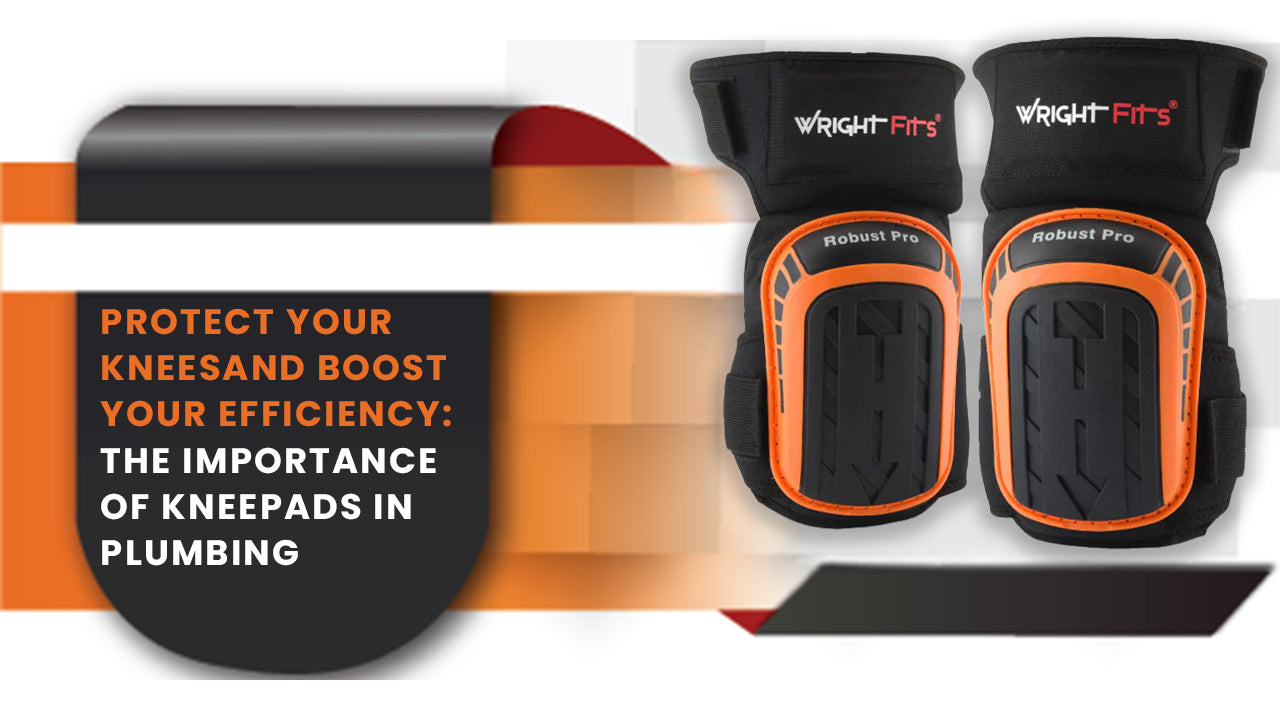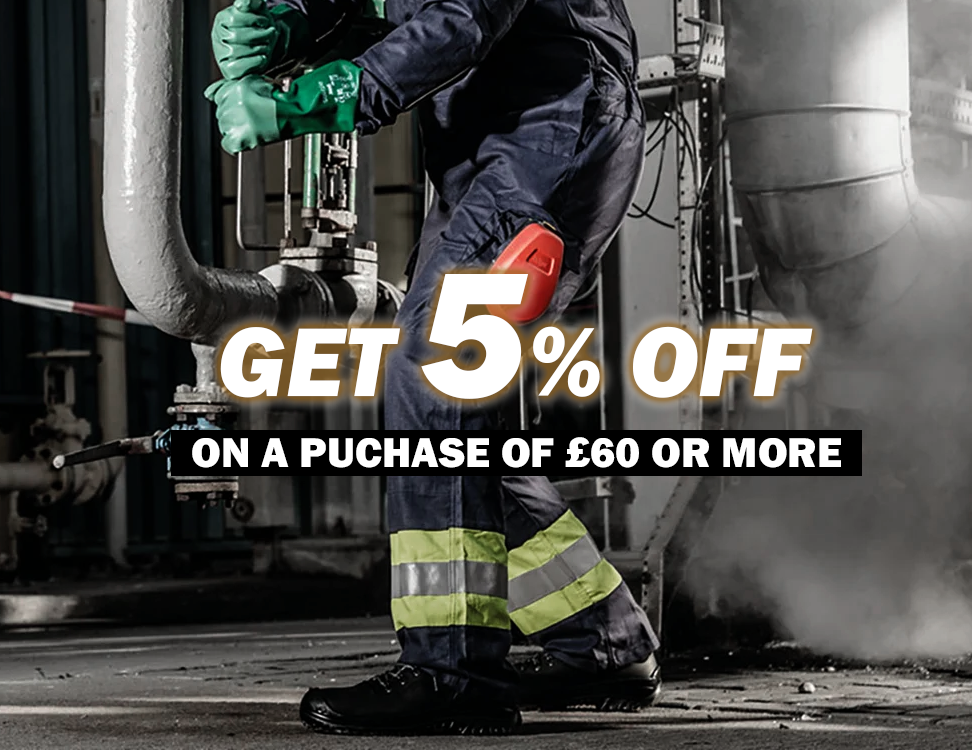Protect Your Knees and Boost Your Efficiency: The Importance Of Kneepads In Plumbing

Plumbing is a profession that demands physical work, including working on one's knees for long hours. Plumbers often kneel on hard surfaces such as tiles or concrete, leading to health problems and work-related injuries. As such, it is essential to wear kneepads when working in the plumbing industry. Kneepads play a vital role in protecting the knees from damage caused by prolonged kneeling. Additionally, kneepads provide a cushioning effect that reduces pain and discomfort, thereby increasing efficiency and productivity.
This blog aims to educate plumbers and individuals interested in the plumbing industry about the importance of using kneepads while working. It will explore the risks of not using kneepads, types of kneepads available, factors to consider when choosing kneepads, and best practices for using kneepads in plumbing. The blog will help readers understand how to choose the best kneepads for their needs and how to use and maintain them correctly.
Risks Of Not Using Kneepads In Plumbing
Long hours of kneeling on hard surfaces can lead to various health problems such as chronic knee pain, which can eventually lead to arthritis. Moreover, prolonged kneeling without kneepads can cause bruises, cuts, and other injuries that can lead to long-term damage.
Plumbers who do not use kneepads are at an increased risk of slips and falls, which can cause injuries such as broken bones, cuts, or bruises. Work-related injuries can be costly and may result in lost wages or time off work, impacting the overall productivity of the plumber and the company they work for.
Prolonged kneeling without kneepads can lead to pain and discomfort in the knees, making it difficult to continue working. Such discomfort can cause distractions and reduce productivity and efficiency, leading to a slower completion of projects. Hence, it is crucial to use kneepads to protect oneself from these risks and to increase productivity and efficiency while working.
Types Of Kneepads
There are different types of kneepads available for plumbers to choose from, including foam, gel, hard shell, and combination kneepads. Like plumber tools the choice of kneepads should be based on the work environment and the level of knee protection required. To pick the right one for you, you need to be familiar with them.
- Foam Kneepads:
Foam kneepads are lightweight and flexible, making them comfortable to wear for extended periods. They are ideal for plumbers who work on soft surfaces such as carpets and offer basic protection against minor impacts and discomfort.
- Gel Kneepads:
Gel kneepads are designed to provide superior comfort and shock absorption. They contain a gel material that molds to the shape of the knee, providing customized support and reducing pressure points. Gel kneepads are best suited for plumbers who work on hard surfaces such as concrete or tiles.
- Hard Shell Kneepads:
Hard shell kneepads have a rigid outer shell that provides maximum protection against impacts, cuts, and scrapes. They are ideal for plumbers who work in rough environments or those who require a high level of knee protection. Hard shell kneepads are also designed to be highly durable, making them a long-lasting investment.
- Combination Kneepads:
Combination kneepads combine the features of foam, gel, and hard shell kneepads. They offer a balance of comfort and protection, making them ideal for plumbers who work on both soft and hard surfaces. Combination kneepads typically have a hard shell outer layer with a foam or gel inner layer for added comfort.
Factors To Consider When Choosing Kneepads
Choosing kneepads, it is important to consider factors such as the level of protection required, comfort, durability, and size and fit. Like the selection of leather tool belt one can’t let go these elements here as well. Let have a detailed look on these factors.
- Level of Protection:
The level of protection required depends on the work environment and the tasks involved. For instance, plumbers who work on hard surfaces such as concrete or tiles require kneepads with a hard shell to protect their knees from impacts and injuries. Those who work on soft surfaces may require kneepads with foam or gel padding.
Comfort:
Comfort is an essential factor to consider when choosing kneepads. Plumbers who work long hours on their knees need kneepads that offer adequate cushioning to reduce discomfort and pain. Gel kneepads are a good option as they provide customized support and are comfortable to wear for extended periods.
- Durability:
The durability of kneepads is also an essential factor to consider. Kneepads should be made of high-quality materials that can withstand the demands of the work environment. Hard shell kneepads are typically the most durable and can last for a long time without needing replacement.
- Size and Fit:
Choosing kneepads that fit well is crucial to ensure maximum protection and comfort. Kneepads that are too tight can restrict blood flow and cause discomfort, while those that are too loose can slip off, providing inadequate protection. It is important to choose kneepads that fit well and have adjustable straps for a customized fit.
Best Practices For Using Kneepads In Plumbing
Using kneepads properly is essential to ensure maximum protection and comfort while working. By ignoring these practices you can land in no man’s land. Here is a bird eye view of these practices.
- Proper Use:
It is important to use kneepads properly to ensure maximum protection and comfort. Kneepads should be worn directly over the knee and should be adjusted to fit securely. It is also important to avoid kneeling on hard objects or rough surfaces without kneepads as this can cause injuries.
- Maintenance:
Proper maintenance of kneepads can increase their lifespan and effectiveness. Kneepads should be cleaned regularly to remove dirt and debris that can cause wear and tear. Foam and gel kneepads can be washed in warm soapy water, while hard shell kneepads can be wiped with a damp cloth. It is also important to check the kneepads for signs of damage such as cracks or tears, and replace them if necessary.
- Replacement:
Kneepads should be replaced regularly, especially if they show signs of wear and tear or are no longer providing adequate protection. It is recommended to replace kneepads every six months to ensure maximum effectiveness.
- Training:
Proper training on the use of kneepads is essential to ensure their maximum effectiveness. Plumbers should be trained on how to choose the right kneepads for their work environment and how to properly use and maintain them. This can help prevent injuries and increase work efficiency.
By following all these best practices, plumbers can work efficiently and protect their knees from harm.
Dare Not Miss Your Plumbing Pal!
The importance of kneepads in plumbing cannot be overemphasized. Like a hex key set Kneepads not only protect plumbers from knee-related injuries but also increase their efficiency and comfort. Enable them to work for long hours without pain or discomfort. When choosing kneepads, plumbers should consider various factors such as the level of protection, comfort, durability, size, and fit. By using kneepads correctly and maintaining them properly, plumbers can protect their knees and work efficiently for years to come.

